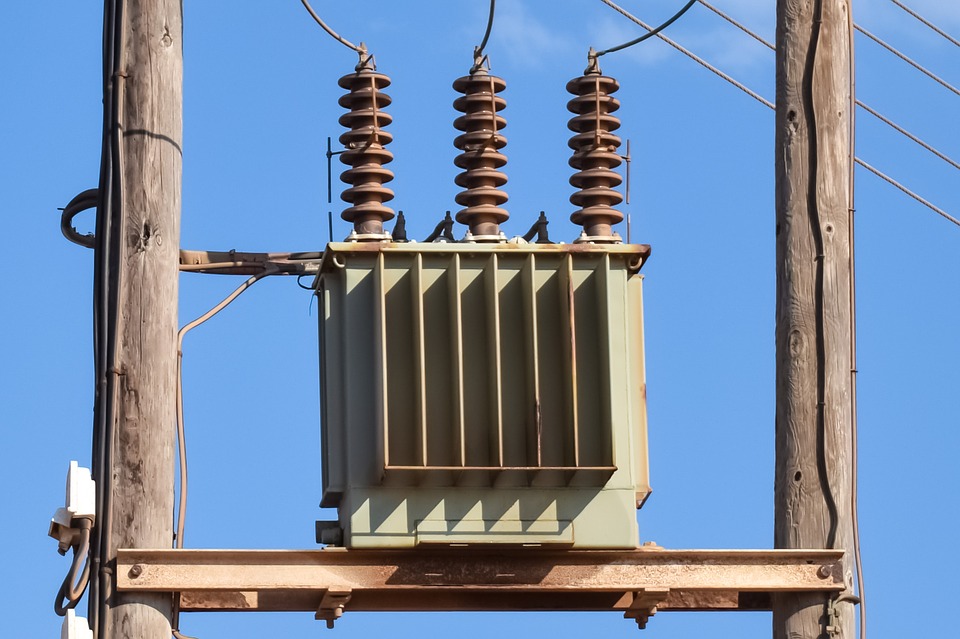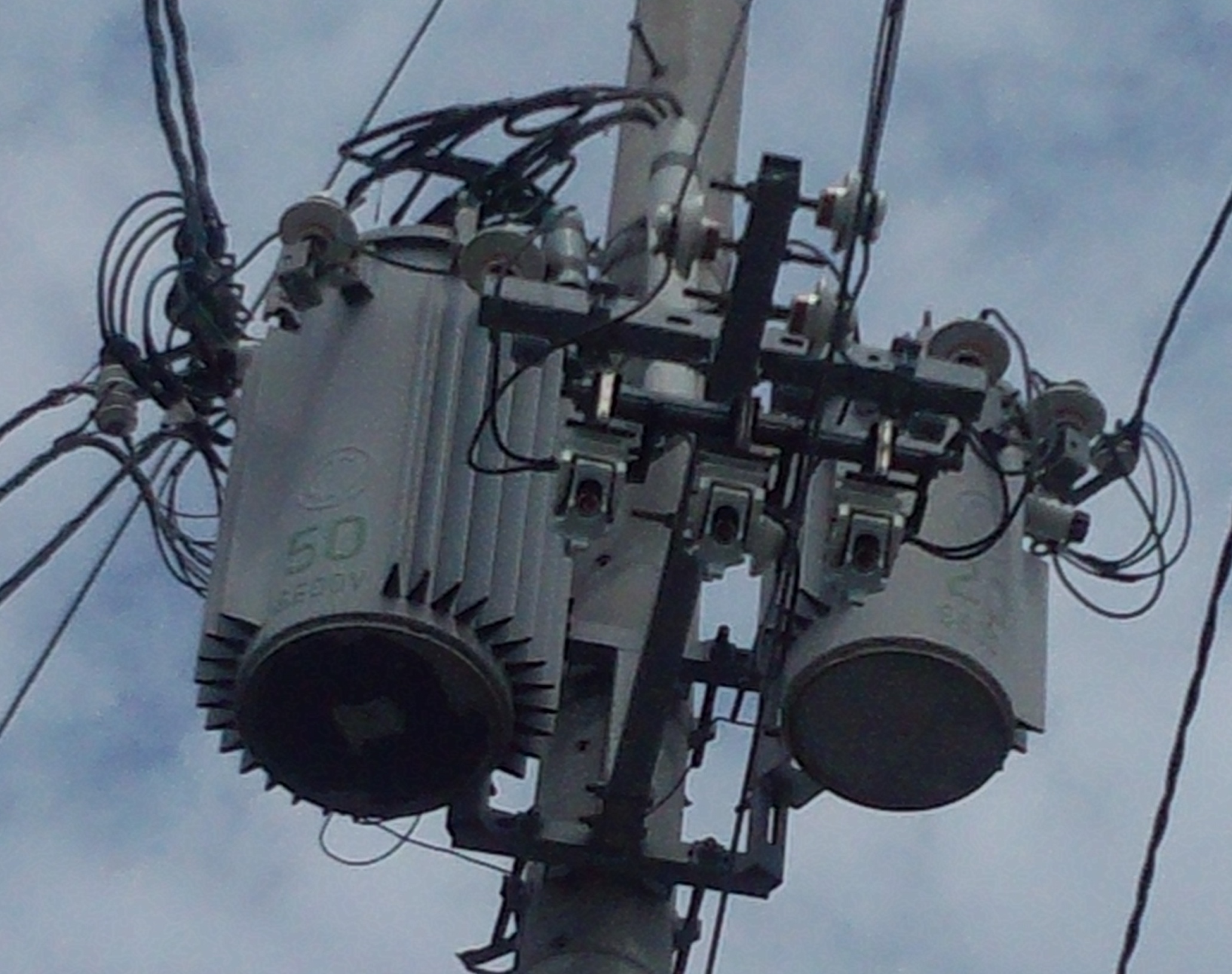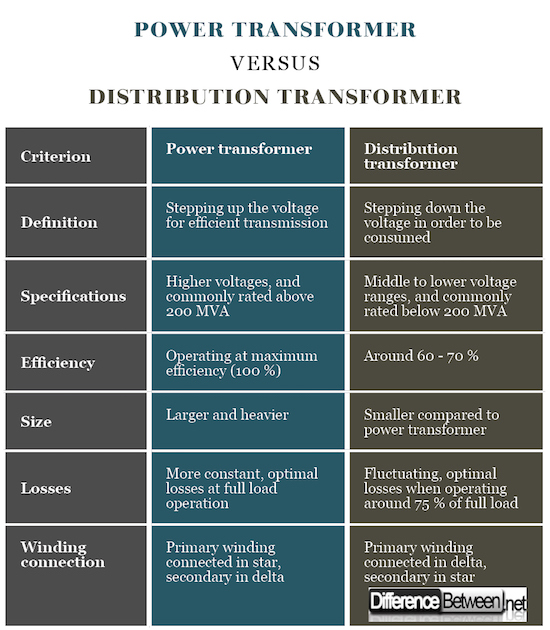Difference Between Power Transformer and Distribution Transformer
The transformer is an electrical device that, by means of electromagnetic induction, converts an alternating current system into one or more alternating current systems of the same frequency, but with different current and voltage values. The role of the transformer in the power system is very important because it enables economical, reliable and safe generation, transmission and distribution of electricity at appropriate voltage levels.
What is Power Transformer?
Transformers are static electrical machines, where one level of electrical energy that is lead to all primary equipment of the device is being transformed into second level electricity in all secondary windings. The electricity is with equal frequency but with a phase shift for a certain degree.
The different levels of primary and secondary electric energy are achieved by different number of wires and are depending on the wires thickness. The number of the band is directly related to the induced voltage, while the thickness of the wire with the maximum induced current or transformer power.
Energy transformers play a very important role in the power distribution system. From a general standpoint the transformers are composed of three main parts: core, primary winding and secondary winding.
For multi-phase power transformers, the most common types of transformers are three-phased. Three-phase transformers may have different modes of primary and secondary coupling, and the basic types of coupling are the star (Y or Wye) and the triangular (delta) connection (D).
The windings can also be connected to a double star or a loop (Z). The difference between these types of couplings is in the line and phase values of voltage and current. According to the type of insulation, power transformers are divided into:
- Oil transformers: make over 95% of installed power in EES due to low price and high reliability, they are produced for all voltages (0.4 – 1000 kV) and all power ranges (50 kVA to a few hundred MVA)
- Dry transformers: used where the space is deficient and when there is a danger of fire (mines, subway, etc.). Produced for voltages of 0.4 to 35 kV
- SF6 transformers: in use from recent years, used for all voltages.
What is Distribution Transformer?
The distribution transformer transforms the voltage level to the end-line (final) value – right to the end consumers, thus being ready for immediate usage.
The most common core configuration for both energy and distribution transformers is with the “E” core kernels. Although there are huge number of variants of the form of the transformer lining (quality, type, thickness) and the technique for lining up the ramparts (step-lap and others), this type is considered classical and conventional.
The three pillars of a three-phase transformer are active which means that when the transformer is operating they are surrounded by windings through which the current will flow.
Difference Between Power Transformer and Distribution Transformer
-
Definition of Power Transformer and Distribution Transformer
As voltage is produced in lower voltage ranges, but the transmission in that range has greater energy losses, the voltage levels need to be increased. A power transformer is an electrical device that step-ups the voltage, without changing the frequency in order to ensure efficient transmission of electricity. Distribution transformer, on the other hand, steps down the voltage at certain point in the system, where the electricity (voltage) is ready to be used by the consumers.
-
Specifications of Power Transformer and Distribution Transformer
Power transformers are rated on higher voltages such as 400, 200, 110, 66, 33… kV and are typically rated above 200 MVA. Distribution transformers are used in lower voltage ranges such as 11, 6.6, 3.3 KV, 440, 230 V) and are commonly rated lesser than 200 MVA.
-
Efficiency values of Power Transformer and Distribution Transformer
Power transformers are constructed for efficiencies of around 100% (the load is near the station). Distribution transformers have varying efficiencies (60 – 70 %) as the load fluctuates.
-
Size of Power Transformer and Distribution Transformer
Power transformers are larger in size (and heavier) and are more difficult for installation.
-
Losses of Power Transformer and Distribution Transformer
Power transformers are directly connected, and are having pretty constant loading. Typically the iron and copper losses are matched to be optimal at maximum full load. In case of distribution transformer as the load fluctuates the losses are more variant in time – optimal losses are typically achieved at 75 % of full load.
-
Winding connection type of Power Transformer and Distribution Transformer
In case of power transformer the primary windings are connected in star, and the secondary into delta connection. In distribution transformers the primary is bound in delta, while the secondary in star type.
Power Transformer vs. Distribution Transformer: Comparison Chart
Summary of Power Transformer verses Distribution Transformer
- The transformer is essentially an energy converter. Electric power is transmitted from the primary to the secondary winding, with only changes in the size of voltage and current. The efficiency of transmission of electricity or power is fairly high, and in case of power transformers is about 100% (98). Power transformers step up the voltage to transmit it across greater distances (the losses increase as the voltage drops in transmission lines).
- Distribution transformers are step down – middle and low voltage range transformers. They decrease the voltage levels so as to be used where needed.
- Difference Between Thermodynamics and Kinetics - June 24, 2018
- Difference Between Welding and Soldering - June 24, 2018
- Difference Between Additive Colors and Subtractive Colors - June 20, 2018
Search DifferenceBetween.net :
Leave a Response
References :
[0]Myers, S. D., Kelley, J. J., & Parrish. R. H. A Guide to Transformer Maintenance. Ohio: S D Myers Inc, 1981
[1]Khanchandani, M. D, & Singh, K. B. Power electronics, 2nd ed., New Delhi: Tata McGraw-Hill, 2008
[2]Donald, G. F., & Beatty, H. W. Standard Handbook for Electrical Engineers, 11th Edition. NY: McGraw Hill, 1978
[3]Image credit: https://upload.wikimedia.org/wikipedia/commons/thumb/a/a0/Distribution_transformer_in_Japan_01.jpg/607px-Distribution_transformer_in_Japan_01.jpg
[4]Image credit: https://pixabay.com/en/electricity-transformer-power-2820425/



